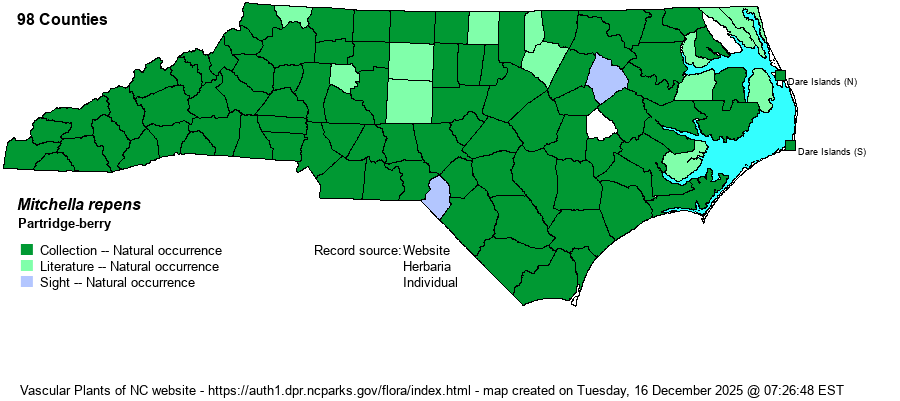| Author | L. | |
| Distribution | Throughout the state, though scarce (or not well-collected) in the far northeastern counties.
This is a widespread Eastern species, ranging from eastern Canada south to nearly all of FL and to eastern TX. | |
| Abundance | Common and widespread across the state, except rare to uncommon in the northeastern portion. | |
| Habitat | This species occurs in a great array of forested habitats. It is most common in mixed hardwood-conifer forests, but also is found in bottomland forests, rich slopes of hardwood forests, in some pine forests, and close to wooded stream banks. |
| Phenology | Blooms from May to June, and fruits from June to July. Some fruits can remain red into the winter if not eaten by animals. | |
| Identification | This is a very familiar and completely unmistakable plant. It has a creeping stem and evergreen leaves, on a stem to about 8 inches long, rooting at nodes. The small rounded leaves, about the size of a fingernail, are opposite, leathery, and dark green. The flowers are twinned, in pairs with a single united ovary. Each flower is tubular, white, about 1/2-inch long, with 4 flared lobes that are fuzzy on the inside. A single red berry forms soon after flowering at each pair of flowers. This is a species that can practically be seen on any woodland walk in most of the state. | |
| Taxonomic Comments | None
| |
| Other Common Name(s) | None | |
| State Rank | S5 | |
| Global Rank | G5 | |
| State Status | | |
| US Status | | |
| USACE-agcp | FACU link |
| USACE-emp | FACU link |

